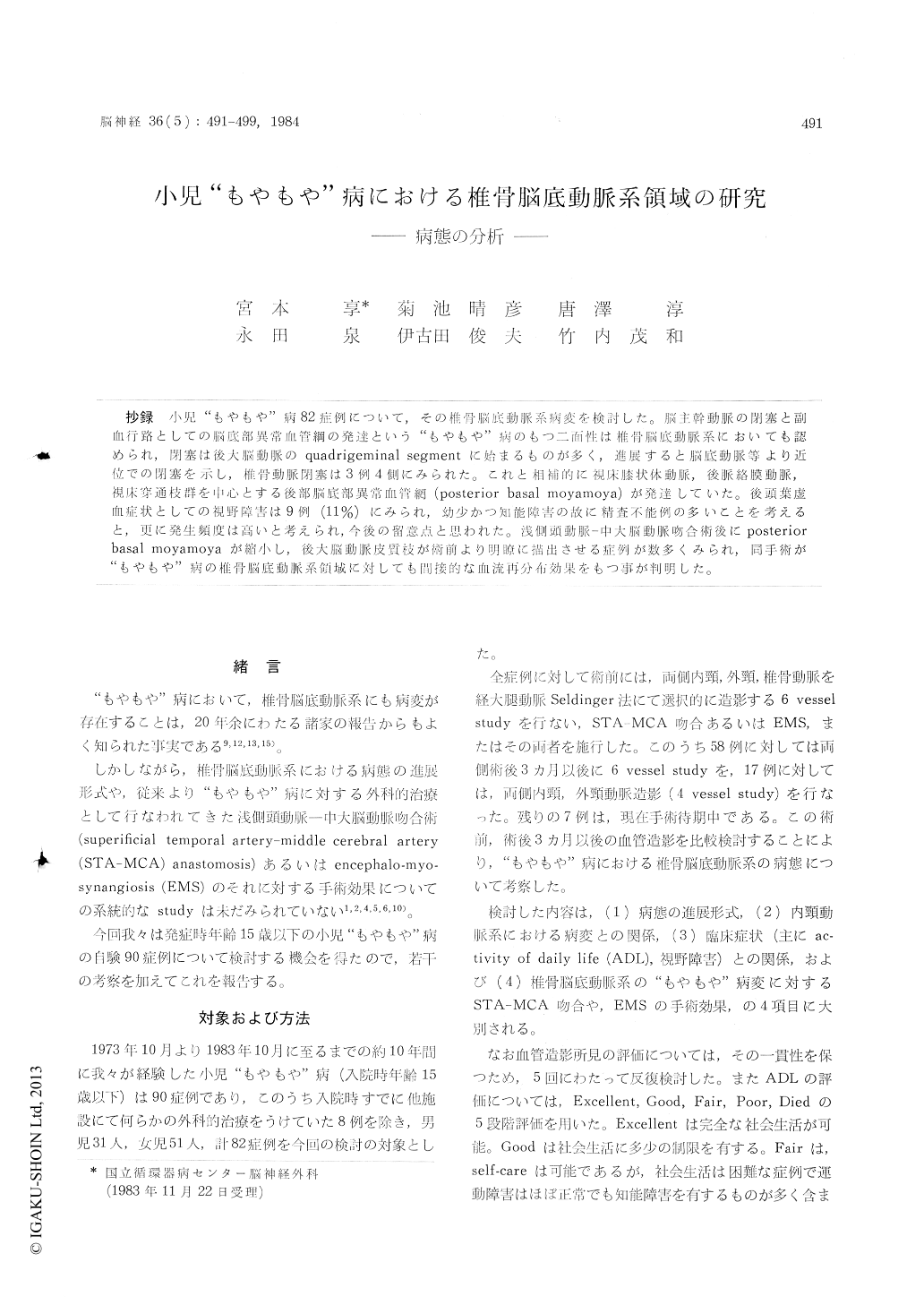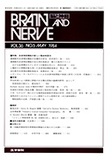Japanese
English
- 有料閲覧
- Abstract 文献概要
- 1ページ目 Look Inside
抄録 小児"もやもや"病82症例について,その椎骨脳底動侵系病変を検討した。脳主幹動脈の閉塞と副血行路としての脳底部異常血管綱の発達という"もやもや"病のもつ二面性は椎骨脳底動脈系においても認められ,閉塞は後大脳動脈のquadrigeminal segmentに始まるものが多く,進展すると脳底動脈等より近位での閉塞を示し,椎骨動脈閉塞は3例4側にみられた。これと相補的に視床膝状体動脈,後脈絡膜動脈,視床穿通枝群を中心とする後部脳底部異常血管網(posterior basal moyamoya)が発達していた。後頭葉虚血症状としての視野障害は9例(11%)にみられ,幼少かつ知能障害の故に精査不能例の多いことを考えると,更に発生頻度は高いと考えられ,今後の留意点と思われた。浅側頭動脈—中大脳動脈吻合術後にposteriorbasal moyamoyaが縮小し,後大脳動脈皮質枝が術前より明瞭に描出させる症例が数多くみられ,同手術が"もやもや"病の椎骨脳底動脈系領域に対しても間接的な血流再分布効果をもつ事が判明した。
Posterior circulation in 82 children of "moya-moya" disease are studied. Two aspects of "moya-moya" disease, (ie ; occlusive lesion of cerebral vessels and the development of abnormal vascular network as collateral channel,) are also detected in the vertebrobasilar system. Among 82 cases, 49 cases showed the occlusion of posterior cerebral artery at their quadrigeminal segment. Twenty-three showed the more proximal occlusive lesions. Vertebral artery occlusion were found in 3 cases. As the occlusive lesion progresses, abnormal vas-cular network at the posterior portion of skull base developed. This network consists mainly of thalamogeniculate artery, posterior choroidal ar-tery, and also of other thalamoperforators.
Visual field defect as an ischemic symptom of occipital lobe was detected in 9 cases (11%).
Superficial temporal artery-middle cerebral ar-tery anantomosis and encephalo-myo-synangiosis (temporal muscle graft), which were not considered to be so effective to the ischemia of the pos-terior circulation, were shown to exert indirect redistribution effect upon the vertebrobasilar sys-tem. However, this effect is such an indirect onethat these surgical treatments cannot prevent the occurence of ischemic stroke in the vertebrobasilar system. For this purpose, omentum transplanta-tion to the occipital lobe may be needed as a method of direct revascularization.

Copyright © 1984, Igaku-Shoin Ltd. All rights reserved.


